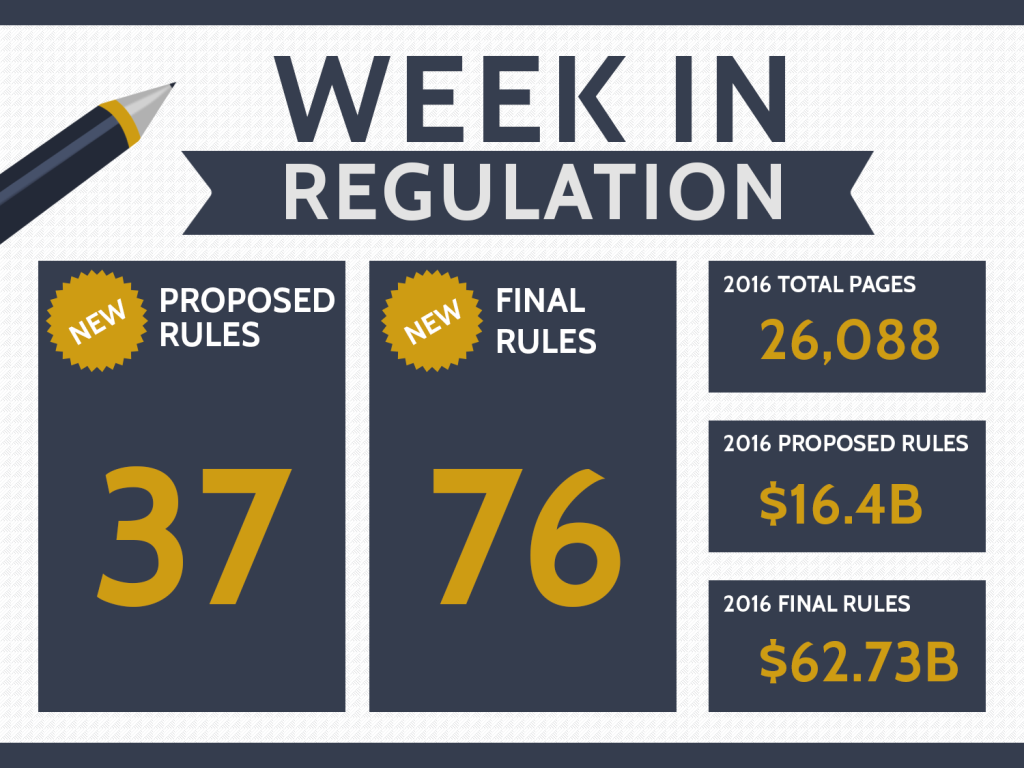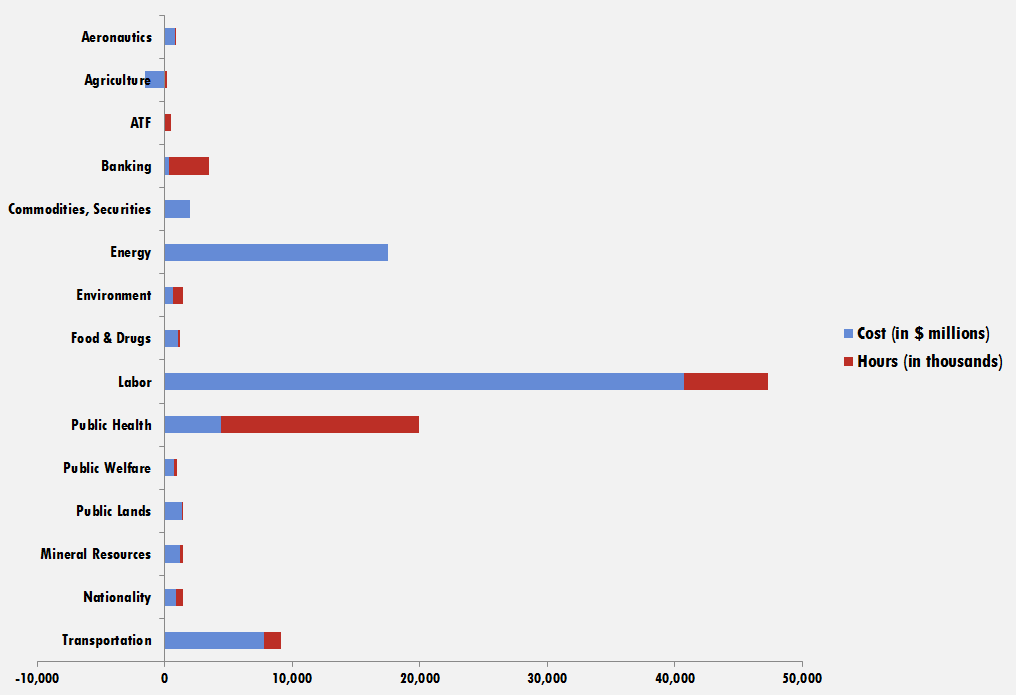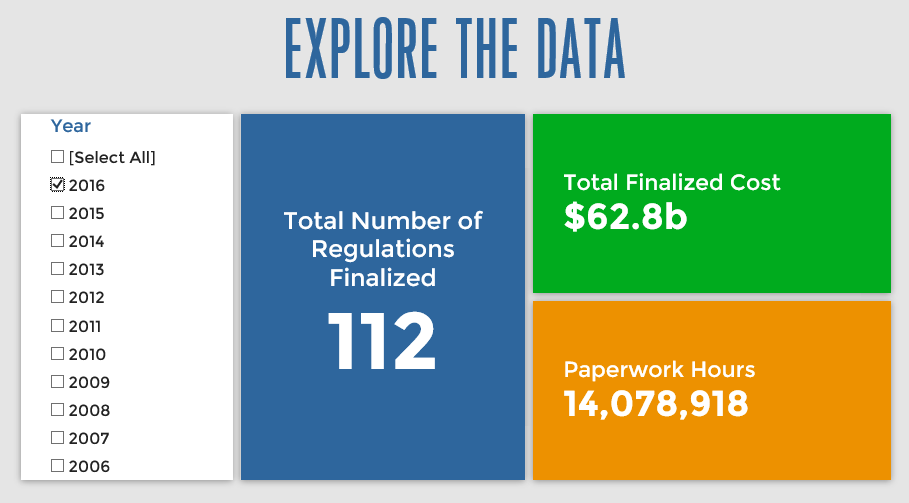Week in Regulation
May 2, 2016
$927 Million in Costs
Nearly touching $1 billion in total costs this week, regulators published 15 rulemakings with a quantified cost, benefit, or paperwork burden. Annualized benefits ($184 million) trumped annualized costs ($153 million) and paperwork grew by more than 861,000 hours. In addition, there was one notable deregulatory measure from the Department of Agriculture. The per capita regulatory burden for 2016 is $245.
Regulatory Toplines
The American Action Forum (AAF) has catalogued regulations according to their codification in the Code of Federal Regulations (CFR). The CFR is organized into 50 titles, with each title corresponding to an industry or part of government. This snapshot will help to determine which sectors of the economy receive the highest number of regulatory actions.
The Food and Drug Administration (FDA) proposed a ban on “Electrical Stimulation Devices” that are used to treat aggressive behavior. This ban applies to both new devices and those already in use. Although the benefits are not monetized, annualized costs approach $7 million. According to FDA, these electronic devices present an “unreasonable and substantial risk of illness or injury.”
The Department of Agriculture finalized meal pattern revisions to the “Healthy, Hunger-Free Kids Act of 2010.” From 2017 to 2021, the administration estimates the rule could save meal providers more than $79 million during this time. According to the analysis, “Much of the net cost savings … result from disallowing grain-based desserts.” Sad, but healthy. This pushes annualized cost savings from deregulatory measures this year to $1.9 billion.
Affordable Care Act
Since passage, based on total lifetime costs of the regulations, the Affordable Care Act has imposed costs of $52.8 billion in state and private-sector burdens and 187.2 million annual paperwork hours (170.6 million from final rules).
Dodd-Frank
Click here to view the total estimated revised costs from Dodd-Frank; since passage, the legislation has produced more than 76.5 million paperwork burden hours and imposed $39.2 billion in direct compliance costs.
A Note on Paperwork
The Office of Management and Budget approved 83 paperwork requirements, decreasing the paperwork burden by 382,474 hours. There were two major changes to existing paperwork requirements (defined as an hourly burden increase or decrease of 500,000 or greater).
The largest increase in paperwork burden hours imposed by an information collection requirement (ICR) was 1.1 million hours from EPA. The largest decrease in paperwork burden hours imposed by an ICR was 1.7 million hours from the Department of Justice.
Total Burdens
Since January 1, the federal government has published $79.1 billion in compliance costs ($62.73 billion in final rules) and has imposed 30.5 million in net paperwork burden hours (14 million from final rules). Click below for the latest Reg Rodeo findings.













